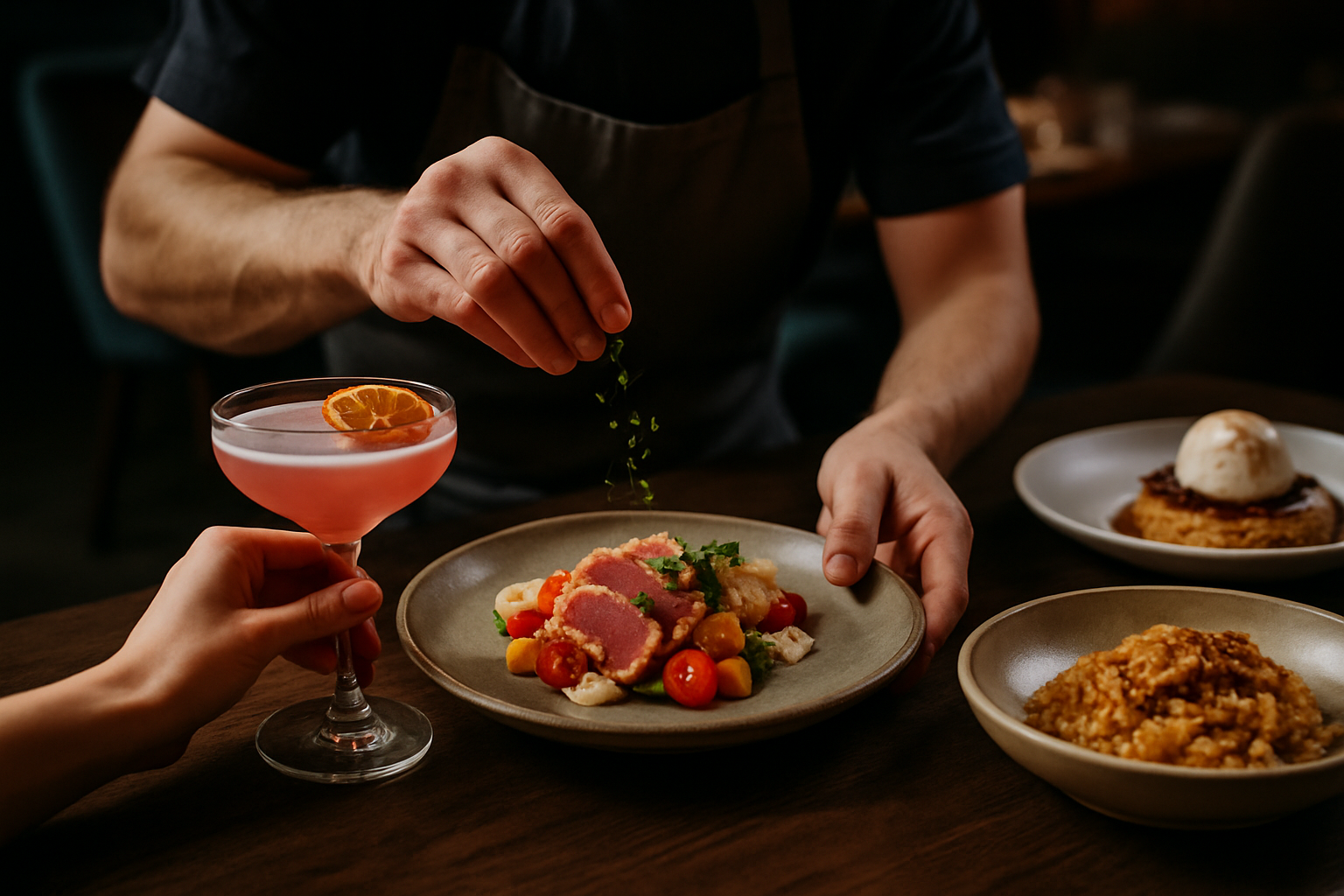Flavor Fusion: The Art of Culinary Mash-ups
Culinary boundaries are blurring as chefs and food enthusiasts explore the thrilling realm of flavor fusion. This gastronomic adventure combines unexpected ingredients and techniques from diverse cuisines, resulting in innovative dishes that tickle taste buds and challenge culinary norms. Join us as we delve into the world of culinary mash-ups, where tradition meets innovation on the plate.

Unexpected Ingredient Pairings
At the heart of culinary mash-ups lies the art of unexpected ingredient pairings. Chefs are pushing the boundaries by combining flavors that traditionally don’t go together, resulting in surprising and delightful taste experiences. For example, the combination of chocolate and chili peppers in Mexican mole sauce has inspired desserts like chili-infused chocolate truffles. Similarly, the marriage of sweet and savory flavors has led to creations like bacon-maple ice cream and lavender-infused savory dishes. These unconventional pairings challenge our taste perceptions and open up new possibilities in the culinary world.
Fusion Techniques: Blending Cooking Methods
Culinary mash-ups aren’t just about combining ingredients; they also involve blending cooking techniques from different cuisines. For instance, the French sous-vide method is being applied to traditional Asian dishes, resulting in perfectly cooked meats with intense flavors. Another example is the use of molecular gastronomy techniques in traditional comfort foods, creating playful textures and presentations. By merging diverse cooking methods, chefs are able to create dishes that honor traditional flavors while introducing new and exciting elements to the dining experience.
Street Food Goes Gourmet
The influence of street food on high-end cuisine has led to some of the most exciting culinary mash-ups. Chefs are elevating humble street food dishes by incorporating luxury ingredients and refined techniques. Think lobster tacos with truffle aioli or foie gras-stuffed bánh mì sandwiches. This trend not only brings street food flavors to fine dining establishments but also introduces gourmet ingredients to casual eateries. The result is a delicious democratization of cuisine that appeals to a wide range of diners and celebrates the diversity of global food cultures.
Fusion in Beverages: Cocktails and Beyond
The art of culinary mash-ups extends beyond solid foods into the world of beverages. Mixologists are creating innovative cocktails that blend spirits, flavors, and techniques from different cultures. For example, a Japanese-inspired Old Fashioned might incorporate whisky infused with green tea and yuzu. In the non-alcoholic realm, we’re seeing fusions like matcha lattes with turmeric and cardamom, combining elements from East Asian and South Asian cuisines. These creative concoctions offer exciting new taste experiences and challenge our perceptions of traditional beverages.
Tips for Creating Your Own Culinary Mash-ups
• Start with familiar flavors and gradually introduce new elements
• Consider texture as well as taste when combining ingredients
• Look for common flavor profiles across different cuisines
• Don’t be afraid to experiment with unconventional pairings
• Balance contrasting flavors to create harmony in the dish
• Use traditional cooking techniques on non-traditional ingredients
• Incorporate aromatic herbs and spices from various cuisines
• Think about presentation and how it can reflect the fusion concept
Culinary mash-ups represent a thrilling frontier in the world of gastronomy. By breaking down cultural barriers and challenging traditional flavor combinations, chefs and food enthusiasts are creating a new language of taste. As we continue to explore and experiment with fusion cuisine, we not only expand our palates but also foster cultural understanding through the universal language of food. So, the next time you’re in the kitchen or dining out, don’t be afraid to embrace the unexpected – you might just discover your new favorite flavor combination.





